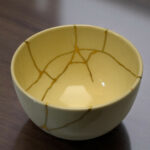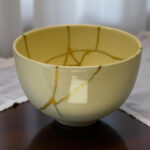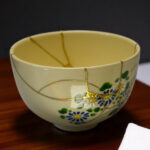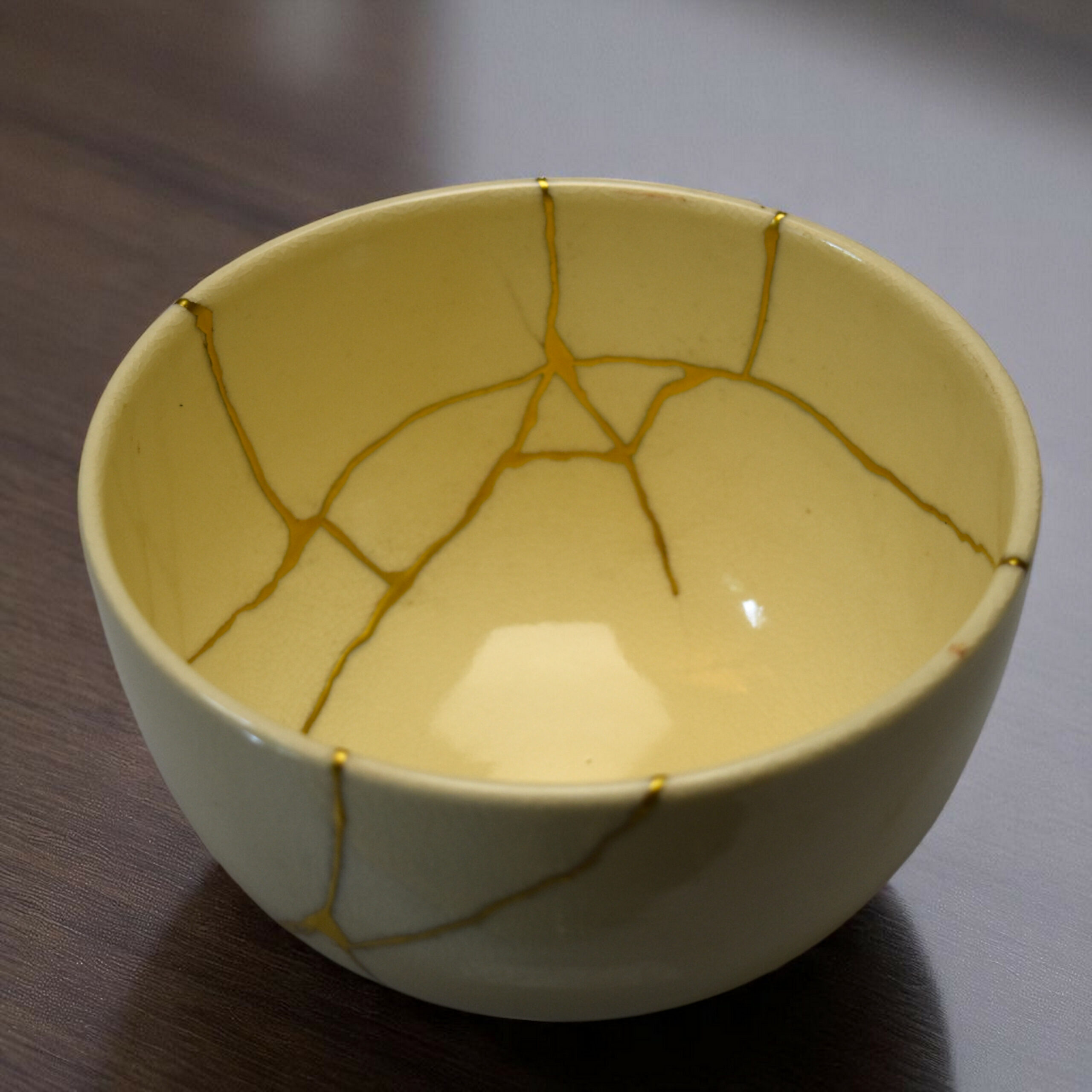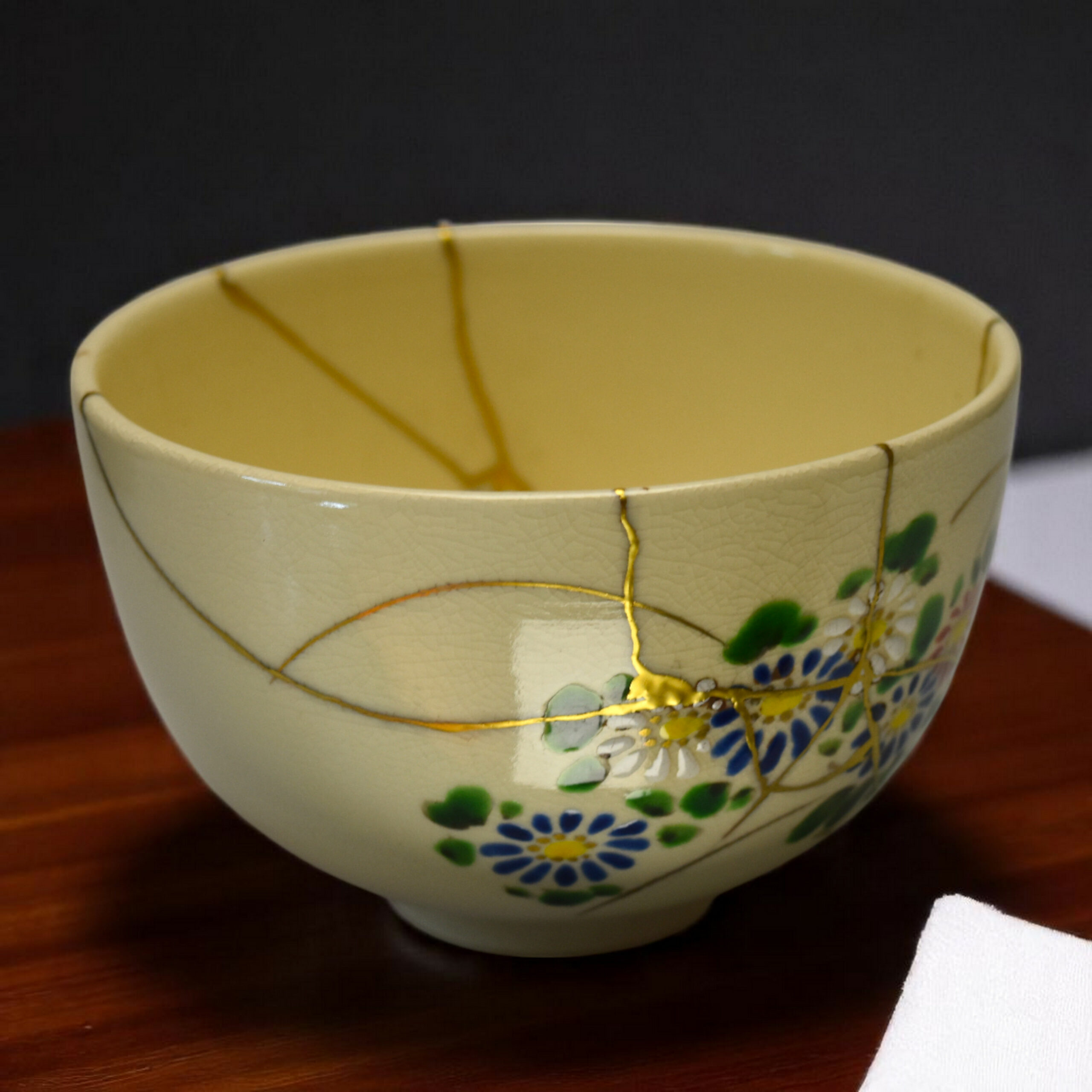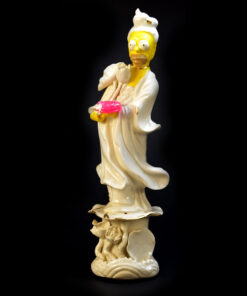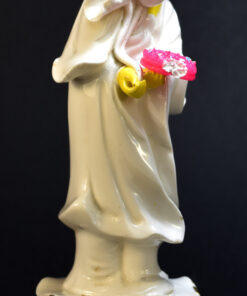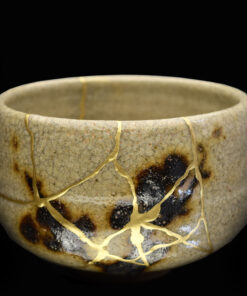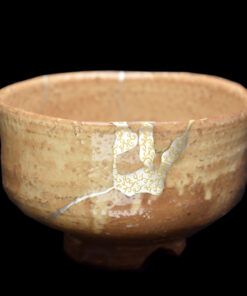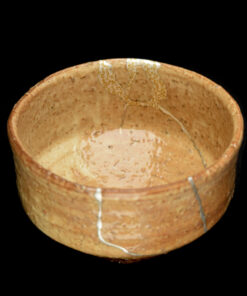Kyo chawan with flowers
750 € VAT excl.
In stock
For express shipping please contact us before purchase as prices are difficult to calculate automatically on the website.
This superb piece is emblematic of Kyoto ceramics from the Edo period (17th to 19th century).
It’s a “Kyō Yaki” bowl, a style of pottery born in the heart of Japan’s imperial capital, where the finest potters and most precious materials were found. This is why pieces created in this style are so refined, featuring elegant hand-painted motifs often enhanced with pure gold details.
Kyō Yaki ceramics are inseparable from the rise of Japan’s tea culture: artists vied for creativity in adorning the bowls (chawan) then used during the tea ceremony. This refined chawan, 4.7 inches in diameter and 2.8 inches high, is a beautiful example.
Kyō Yaki chawan and their graceful patterns are particularly sought after by enthusiasts of yesterday and today. Whether for contemplation, for use again in a tea ceremony, or for enjoying any other type of beverage: indeed, kintsugi is the only restoration technique compatible with food use.
This unique, hand-painted piece is magnified by a 24-carat gold kintsugi restoration.
Myriam’s Eye: I particularly love the floral decoration adorning this bowl. In Japanese art, the iris is often associated with spring. These botanical motifs are very common in the world of the Japanese tea ceremony, which adapts to the changing seasons. This is why objects used for making tea are often adorned with characteristic plants that allude to the current season, as is the case with this chawan.
| Origin | Kyoto, Japan |
|---|---|
| Food Safe | Yes |
| Certificate of Authenticity | Provided |
| Color | Cream |
| Materials | 24 carats Gold, Japanese sandstone, Urushi (Japanese lacquer) |
Related products
Traditional Japanese Kintsugi
Traditional Japanese Kintsugi
Traditional Japanese Kintsugi



